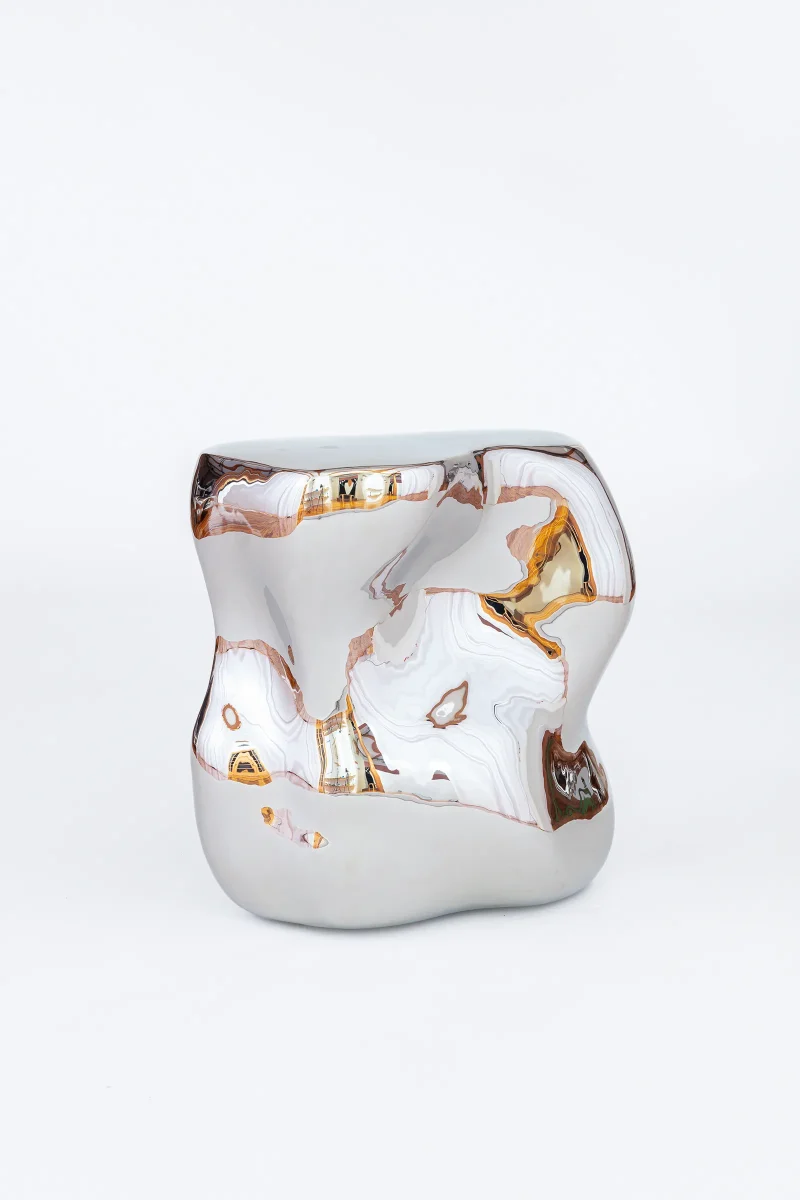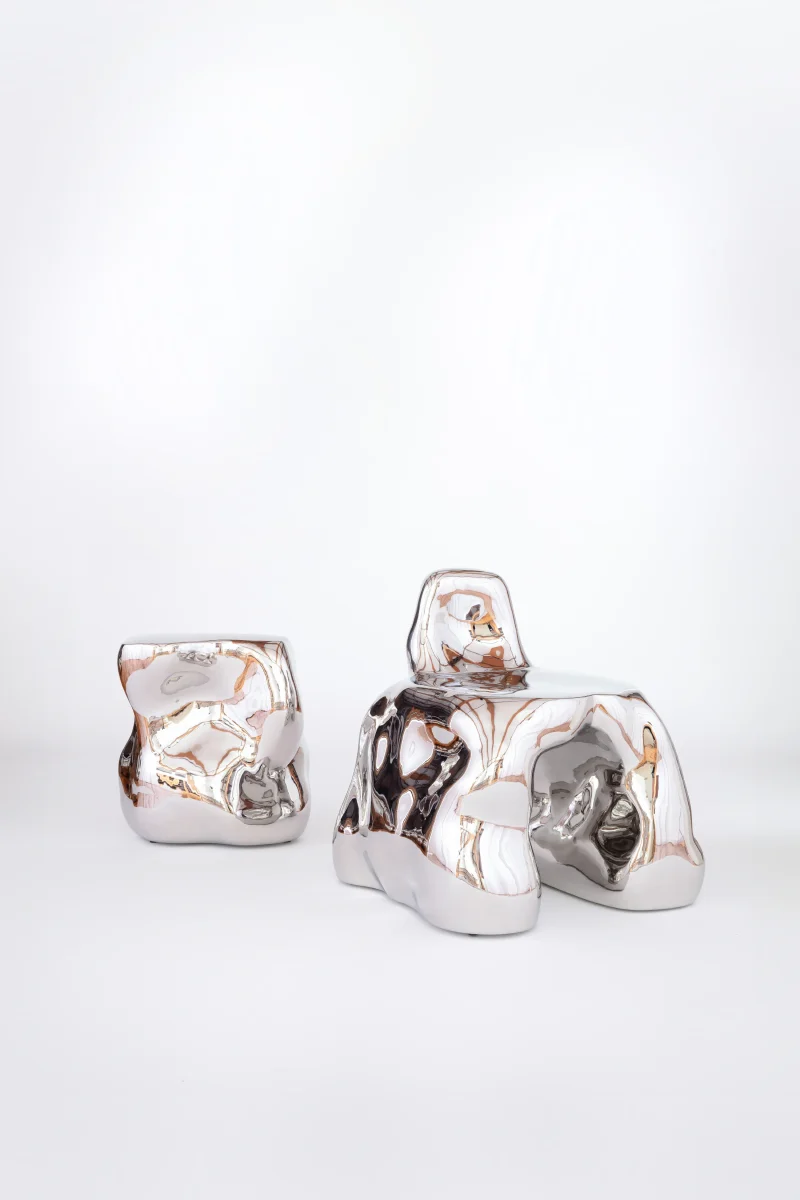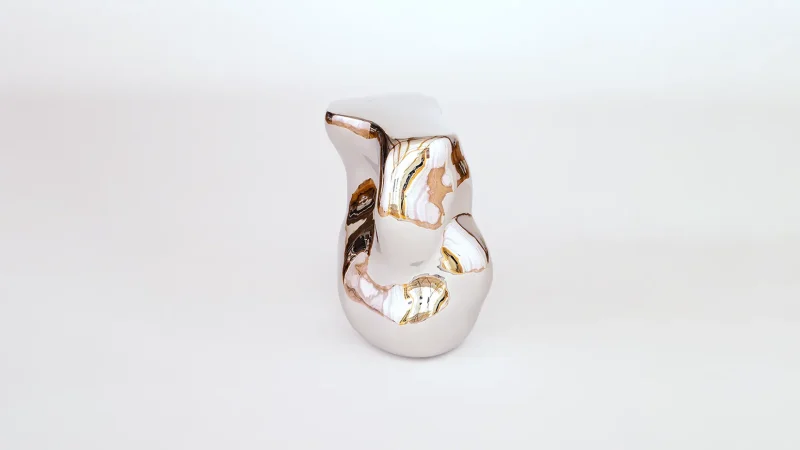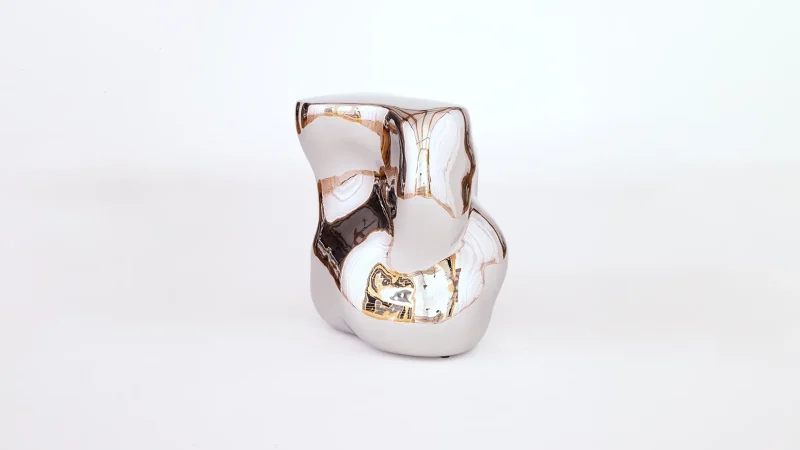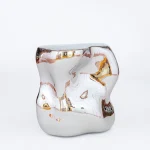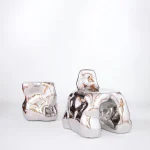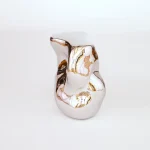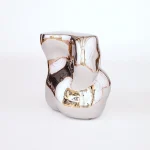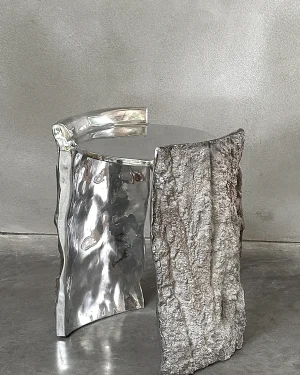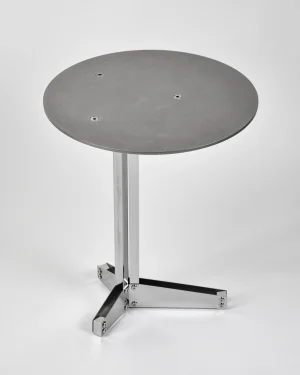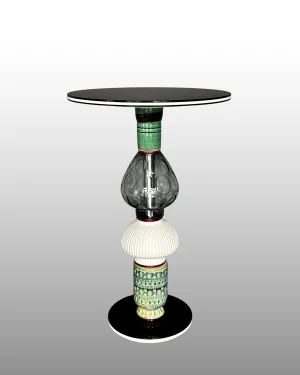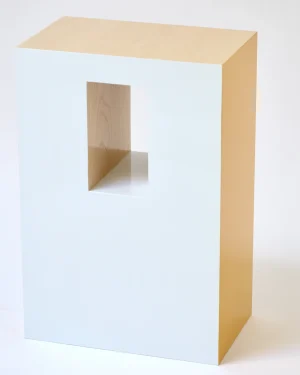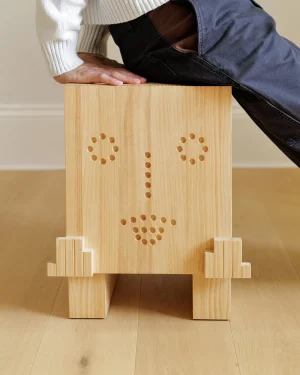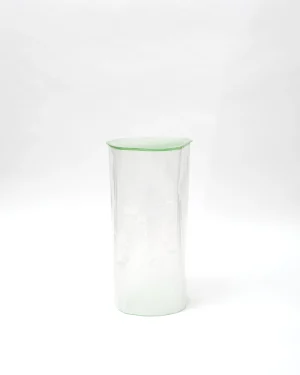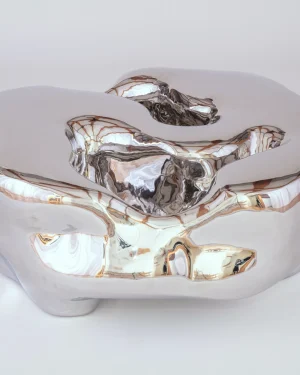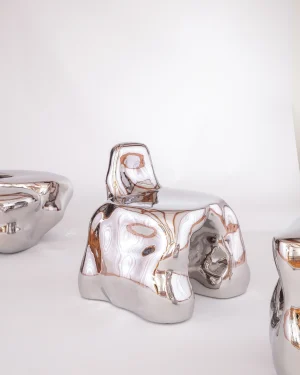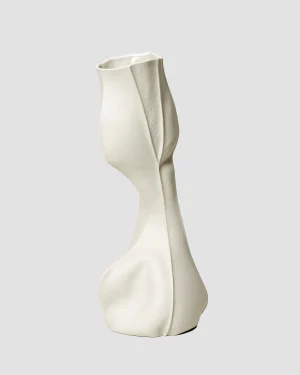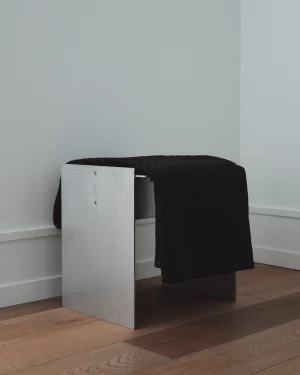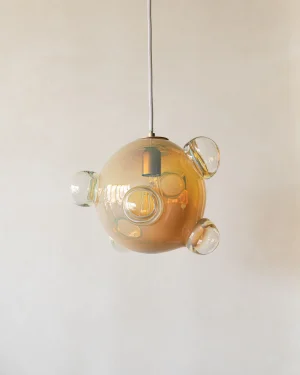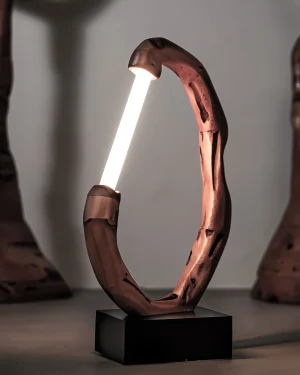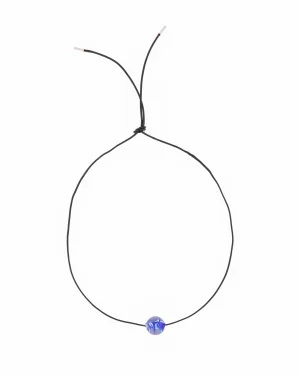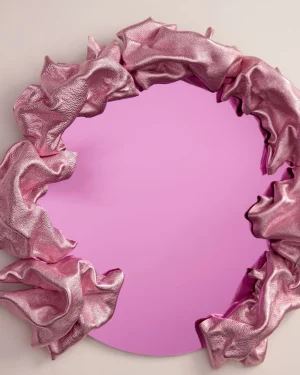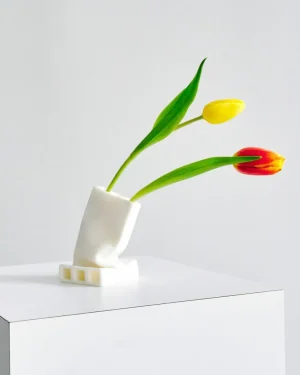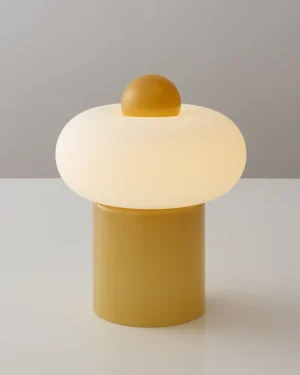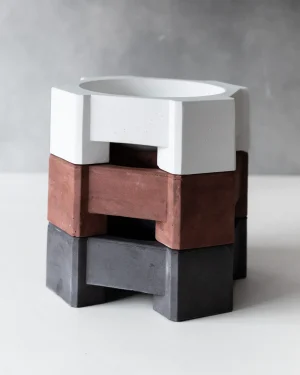Surface Stand is a design experiment to bring digital objects into a physical space. In the realm of digital simulation, all things are made of points, lines and infinitely thin surfaces. Digital objects are, in practice, surfaces, folded, bent and stretched to embody/manifest/envelope designed forms. With subtle deformations of a single steel sheet, polished to an alluring mirror finish, Surface Stand translates ideal digital objects, with virtually no tolerances, into the fuzzy, imperfect material space.
In Baroque calculus, both time and space are conceived as continuous, devoid of abrupt ruptures. This form of calculus operated with a theoretical material that was smooth, isotropic, and consistent—an idealization that did not exist in reality at the time. Stainless steel, invented in the 19th century, approximates this abstract material, embodying the qualities of smoothness and uniformity. Digital simulation today utilizes infinitely pliable, homogeneous abstract surfaces, reminiscent of the theoretical surfaces of Baroque calculus, thus continuing the legacy of this abstract, continuous material in a modern context. Inspired by these historic antecedents of digital simulation, each Surface object is both digitally modelled and physically hand-crafted through a process of forging and meticulously polishing a single sheet of stainless steel into its ideal form. Emerging from the digital space, Surface objects reflect and derive their identity from a constant dialogue with the space beyond themselves.
The Surface Stand is designed and forged from a single material – 100% 304 stainless steel finished to a #8 mirror polish. Crafted to stand the test of time.
| Dimensions LxWxH | 53x36x55cm (21x14x22'') |
|---|---|
| Piece Weight (kg) | 14 |
| Production Year | |
| Material | |
| Discipline | |
| Color | |
| Design Class | |
| Number Of Pieces Created | 8 |
